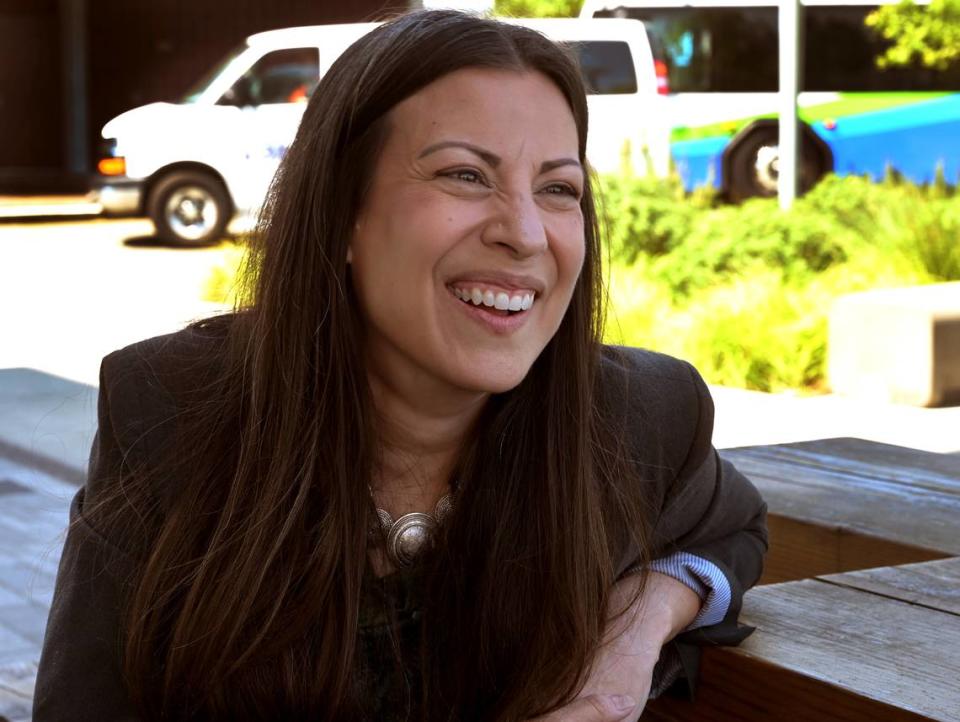Here’s how far Intercity Transit has come since the COVID-19 pandemic
The comeback is well under way at Intercity Transit, the bus system that serves Thurston County, as its ridership and service levels continue to inch closer to pre-pandemic status, officials say.
By this fall, both categories could reach 80 percent of levels set before COVID-19, said interim General Manager Emily Bergkamp, who was recently appointed to the position after former longtime GM Ann Freeman-Manzanares retired in March.

“We are seeing a steady increase in ridership and service levels,” she said, adding that those who are riding the bus are a mixture of commuters, students, youth, those with disabilities and those without reliable transportation.
Some previous bus users still haven’t returned in great numbers, she said, including the elderly and state workers, many of whom are still working from home.
Still, the current ridership and service levels, which are right around 76 percent of pre-pandemic status, are a far cry from what IT experienced during the pandemic.
During a meeting of IT’s board in August 2020, about six months into the pandemic, former GM Freeman-Manzanares reported that ridership had fallen nearly 70 percent from the same period in 2019.
And that’s after 2020 started with a bang. Why? That’s when Intercity Transit introduced its zero-fare policy — making it free to ride an IT bus — and watched ridership grow 60 percent in January and February. What happened in March? The pandemic arrived.
Ridership has slowly come back, but sometimes in fits and starts, Bergkamp said. Some riders stayed away because of concerns about their health, and some were turned off by IT’s mask mandate. Then, IT’s ridership dipped again when the Omicron variant of COVID-19 began to spread.
But when COVID-19 cases began to drop, riders returned, she said.
If service levels hit 80 percent of pre-pandemic levels in the fall, it could mean greater bus frequency on certain routes, Bergkamp said.
Some routes, however, still have not been relaunched. They are the night bus line to The Evergreen State College, the Dash Service that runs between the Capitol Campus and Olympia Farmers Market and The One, a rapid transit service that operated between the Martin Way Park and Ride and Capital Mall.
Of those three, Bergkamp said they are aiming to bring back The One by early 2024.
It’s not just about ridership either. Bus drivers, those close to retirement and those worried about their health, left the organization during the pandemic, she said.
Bergkamp said IT has made gains in hiring drivers, but needs to hire more.
“We hire drivers based on customer service experience,” she said. “We can help people get their commercial drivers license.”
From produce manager to bus driver
Nate Conat was the produce manager at the Ralph’s and Bayview Thriftway stores in Olympia for 27 years when he decided he needed a change. So in December 2022, he began driving for IT.
He has noticed that buses are starting to fill up again, which he much prefers to one with no riders.
“An empty bus is really boring because I’m by myself,” he said. “I’d much rather have a packed bus to drop everyone off.”
And driving a bus is easier than it looks.
“It’s going from being really afraid to being able to drive,” he said. “It’s actually pretty easy. Just pay attention.”

And what are riders saying these days about the state of service?
Darlene Hill of Olympia was waiting for a bus at the Olympia Transit Center on Friday and so was Sandy Colgrove, also of Olympia.
Although both have noticed an increase in riders, more important to them is that they can still ride for free, they said.
Hill recalled a time when she couldn’t afford bus fare.
“It is so convenient,” said Hill, who added that she has been riding the bus for a little over 12 years.
Colgrove, who lives downtown, needed to ride the bus on Friday because her car wasn’t working.
“I’m glad it’s right here,” said Colgrove about the downtown transit center, “and that it’s free.”
“Some people just don’t have the money,” she said.
Bergkamp said the zero-fare pilot program has been extended to 2028.
Some numbers
▪ Average monthly ridership, April 2022 to March 2023: 259,695.
▪ Average monthly ridership, March 2019 to February 2020: 343,313.
Source: Intercity Transit.

